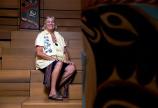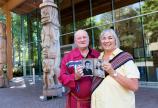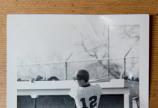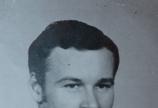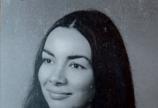"Say you are Spanish"
- Fern Perkins
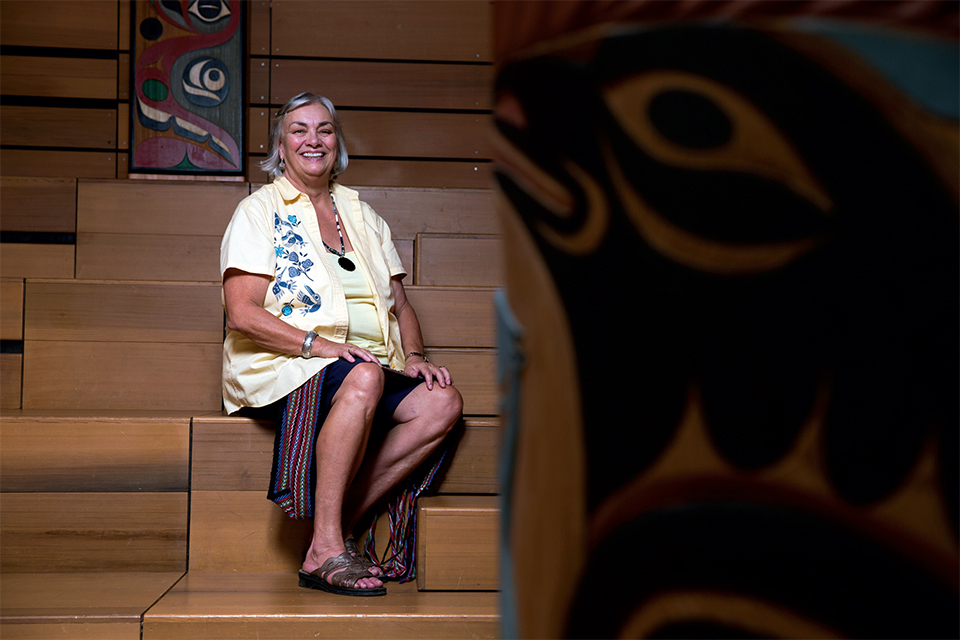
Alumna Fern Perkins says her UVic education in the 1960s and 1970s saved her from a life of poverty and despair. Years later, she unlocked the secrets of her true Indigenous identity.
When I enrolled at the University of Victoria in 1968, my mother warned me, “Never tell anyone you have ‘Indian’ blood. If they ask, say you are Spanish.” I’d heard different versions of this my whole life. When I was in elementary school at Frank Hobbs, my mother told me to flee to the nearby woods if strangers approached me, even suggesting they might come for me by helicopter. At the time, I thought she was crazy. Though my mother did suffer from mental-health issues her whole life, I know now—she feared that I would be apprehended and taken to residential school on Kuper Island (since renamed Penelakut).
I really did tell people I was Spanish. I didn’t know any better until many years later. I grew up in a humble home near the UVic campus. My father was a barber, and my childhood was very difficult. Our family struggled with poverty, abuse and alcoholism. Even as early as age five, I was determined to build a better life. I saw education as the way to dig myself out. I graduated from Oak Bay High in 1968, the only person in my family to complete secondary school.
To put this all in context, in 1960, Indigenous people in Canada were granted the conditional right to vote in federal elections only if they gave up their status and treaty rights. Those who lived on the reserve needed a document to leave it. My family “passed for white” and lived in poverty off reserve. It was my dream to attend UVic and free myself from the constraints of poverty and abuse. I earned bursaries, worked multiple jobs and took out a student loan to pay my way through first and second years. The two-year teaching licence from Professional Studies in the Faculty of Education at UVic allowed me to be a substitute teacher in Victoria for $25 a day. I was empowered. UVic was helping me make the difference between a limited life in poverty and a life of freedom with education. All along I did not reveal—or even know—about my true Indigenous background.
After completing my third year in the Bachelor of Education program at UVic, I received a professional teaching certificate in 1971. That summer, I married my childhood classmate, Mark Perkins (DipEd ’74) , as we had first planned at 15 years of age. He would later learn that he, too, was Indigenous. He did not know he was Shoshone-Cree-Métis, and that his mother was the third generation born on Tsimshian territory, living on the Kitsumkalum reserve. We had been best friends since we were ten years old. Neither of us knew that we had Indigenous roots.
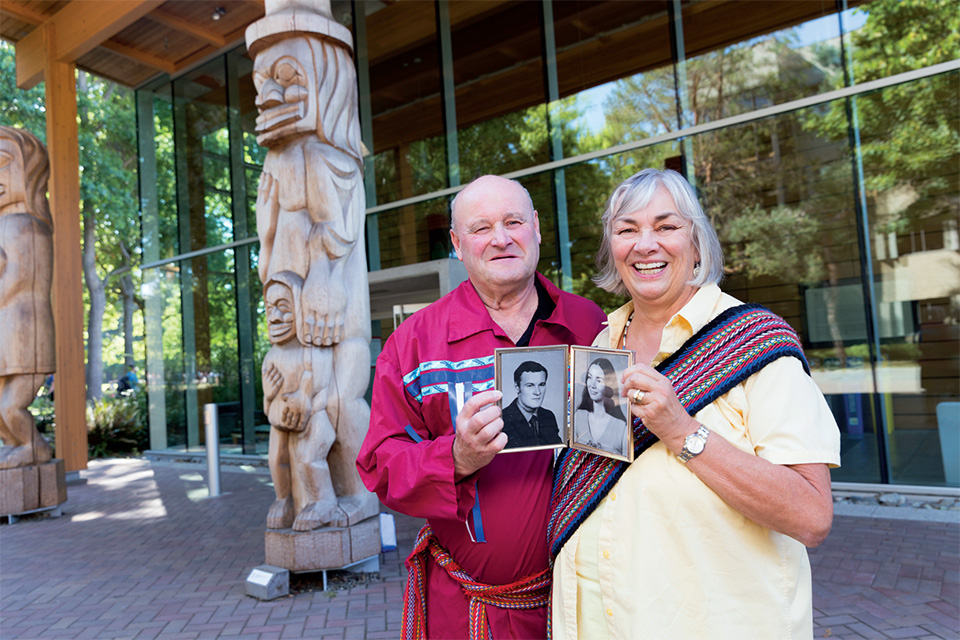
After graduating from Oak Bay High School, Mark, a gifted pitcher, first baseman and power hitter, was scouted by the San Francisco Giants and earned a baseball scholarship to Lewis-Clark State College in Lewiston, Idaho. I transferred to the same college after we married and we graduated in 1972, both with a Bachelor of Science in Education. At the time, we did not know we were studying our own ancestors during our required history courses. Mark returned to UVic to complete the post-degree professional teaching certificate in 1974.
After I taught in Idaho, Saskatchewan and Victoria, UVic invited me to join the Faculty of Education as a specialist in instruction to supervise professional-year student teachers in the various programs. One day in 2005, I stopped by the office of Lorna Williams in the new Indigenous Education department. As I described some of my history, the incredulous response from staff was, “You have been living with that secret for all these years?” I left with even more questions about my hidden history.
Mark and I raised three children together: Rachel, (BA ’02) who works for Indigenous language revitalization; Vince, who played for the Toronto Blue Jays and Team Canada before becoming a firefighter/paramedic in Florida; and Joel, who also earned a college baseball scholarship as a pitcher and now works as an investment advisor. Our children seemed to inherit their parents’ grit and determination to succeed—they were just beginning to learn about their true family history.
After I completed a Master of Education at UVic in 2006, I had the time to fully uncover the truth about my heritage. That research put me on the path to retrace my ancestors’ journeys. My father had Mohawk ancestry, and my mother was Anishinabé-Métis Salish. My great-great-great grandmother was Isabella Merilia Mainville Ross, the first registered female landowner in BC. Ross Bay Cemetery is the remnant of her “Fowl Bay” farm. My great, great, great grandfather, a Scottish Hudson’s Bay Company (HBC) officer named Charles Ross, had married into my Indigenous family. Ross was brought in to supervise the building of Fort Victoria in 1843—and my ancestors became the first Métis family in Victoria. They lived in the HBC officer’s residence in Fort Victoria. For the first time, I began to understand the Indigenous background that had been hidden from me—and even from my parents.
Mark and I both delved in deeper. We became registered citizens of the Métis Nation in Greater Victoria (MNGV) and BC. I have since found my Anishinabé-Métis, Coast Salish and Mohawk families. After retiring from the UVic Department of Teacher Education and working for the Provincial Health Services Authority, I returned to the UVic Indigenous Education department as an instructor of the newly mandatory Indigenous Education course. Mark retired as Battalion Chief with the Victoria Fire Department. We became role models for our local Métis community and now coordinate the education program for the Nation, providing professional development and teaching Indigenous education in grades Kindergarten to 12 in Greater Victoria, Sooke and Saanich school districts.
Recently, someone who had survived the “Sixties Scoop” (in which Indigenous children in Canada were removed from their families by child welfare services and placed in adoptive homes) asked how Mark and I had managed to maintain our relationship and wellness over the past 58 years of friendship and 47 years of marriage. One answer has to be education. We call it the new buffalo. The Prairie and Woodlands buffalo used to be the whole sustenance of the plains Ojibway, Cree and Métis Nations. Every part of the tatanka was used. The children learned about using each part as their survival and life skills depended on it. When the Prairie buffalo disappeared forever, the First Peoples had to find another way to live. Formal education has become the new way of life for many.
I wonder if there were others like me and Mark at UVic in the 1960s and 1970s who either hid or did not know about their Indigenous identity. If you were one of these people, please write to us at torch@uvic.ca. We'd love to hear your story.
Photos
